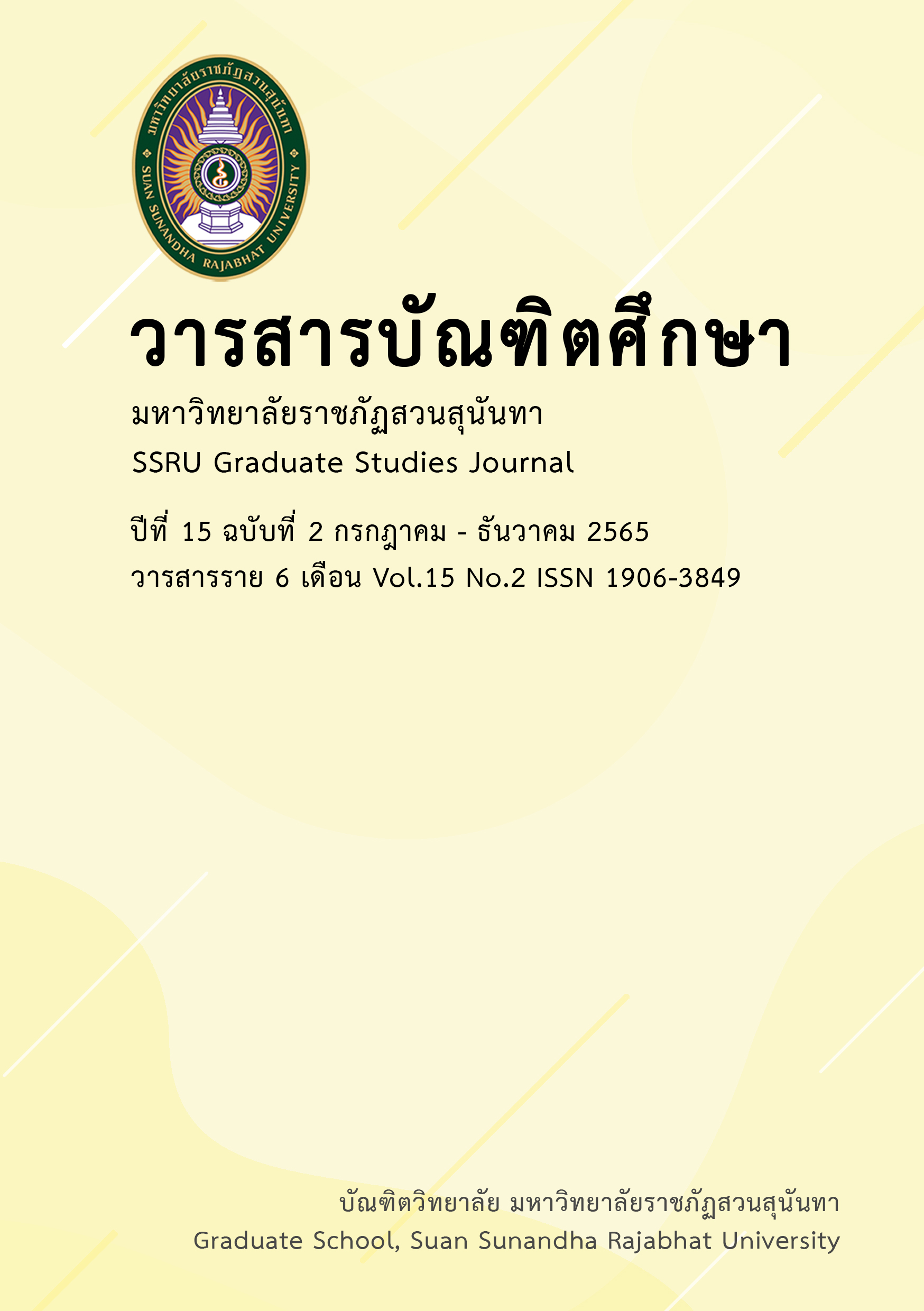Development of Computer-Assisted Lesson in Thai Language Subject on the Topic of Principles of Thai Language Usage for Grade-Sixth Students at Wat Chaeng Lam Hin School (Poonrat Upatham), Lam Luk Ka District, Pathum Thani Province
Main Article Content
Abstract
The objectives of this article were to: 1) develop computer-assisted lesson in Thai language course on the topic of principles of Thai language usage for grade-sixth students at Wat Chaeng Lam Hin School (Poonrat Upatham), Lam Luk Ka District, Pathum Thani Province ; 2) compare students’ learning achievement before and after learning via the developed computer-assisted lesson, with the predetermined goal of 70 percent of the total score; and 3) examine the students' satisfaction towards the developed computer-assisted lesson. The research tools included: 1) computer-assisted lesson on the topic of principles of Thai language usage for grade-sixth students consisting of five chapters: Chapter 1: word formation using information words, compound words, repetitions, synonyms, and synonyms; Chapter 2: analysis of the types and functions of words in sentences; Chapter 3: analysis of differences in spoken language and written language; Chapter 4: Composing Kapyani Verse 11; and Chapter 5: Dialects; 2) pre-test and post-test of each chapter; and (3) a questionnaire on students’ satisfaction towards the computer-assisted lesson which consisted of 10 items. pre-test (consisting 20 items) and post-test (consisting of 20 items). The results showed that: 1) the computer-assisted lesson which was developed by the researchers had the overall efficiency E1/E2 = 81.68/82.70, which met the assumption of the 80/80 criterion; 2) the students’ achievement after learning with the computer-assisted lesson was higher than that before using the less, at a 0.05 level of the statistical significance; and 3) the students’ satisfaction level with the computer-assisted lesson was at a good level, and their opinion on the interest of the content and their satisfaction were at a good level. This was followed by the aspect of the content which was clear, easy to understand, and enjoyable which was also at a good level.
Article Details
References
ไชยยศ เรืองสุวรรณ. (2546). การพัฒนาบทเรียนคอมพิวเตอร์. มหาสารคาม: ภาควิชาเทคโนโลยีและสื่อสารการศึกษา คณะศึกษาศาสตร์ มหาวิทยาลัยมหาสารคาม.
กมลพรรณ ดีรับรัมย์, ศิริพร พึ่งเพ็ชร์. (2022). การพัฒนาผลสัมฤทธิ์ทางการอ่านและ การเขียนภาษา ไทยเพื่อการสื่อสารในชีวิตประจำวันและความพึงพอใจต่อ การจัดการเรียนรู้แบบร่วมมือเทคนิค CIRC ของนักเรียนชั้นประถมศึกษาปีที่ 2. วารสารนวัตกรรมการจัดการศึกษาและการวิจัย, 4(2), 253-266.
กรมวิชาการ. (2546). คู่มือหลักสูตรการสอน. กรุงเทพฯ: โรงพิมพ์คุรุสภาลาดพร้าว.
กระทรวงศึกษาธิการ. (2551). หลักสูตรแกนกลางการศึกษาขั้นพื้นฐาน พุทธศักราช 2551. กรุงเทพฯ: พัฒนาคุณภาพวิชาการ (พว).
ณฐาพัชร์ วรพงศ์พัชร์, สุริยะ วชิรวงศ์ไพศาล และพงษ์ศักดิ์ ผกามาศ. (2564). การพัฒนาแพลตฟอร์มดิจิทัลรายวิชาเศรษฐศาสตร์ธุรกิจโดยใช้รูปแบบการจัดการเรียนรู้แบบใช้ปัญหาเป็นฐานสำหรับผู้เรียนระดับปริญญาตรีคณะบริหารธุรกิจ. วารสารศิลปศาสตร์และอุตสาหกรรมบริการ มหาวิทยาลัยเกษตรศาสตร์, 4(2), 427-442.
ศศิกัญญา กัลป์ทอง. (2022). ผลการจัดการเรียนรู้ด้วยแบบฝึกทักษะการเขียนสะกดคำยากวิชาภาษาไทย ที่มีต่อความสามารถในการเขียนสะกดคำของนักเรียนชั้นประถมศึกษาปีที่ 2. วารสารนวัตกรรมการศึกษาและการวิจัย, 6(2), 425-439.
Petchara, N. (2022). การพัฒนาระบบสารสนเทศสำหรับประเมินสมรรถนะผู้เรียนตามมาตรฐานการ เรียนรู้หลักสูตรแกนกลางการศึกษาขั้นพื้นฐาน. Journal of Social Science and Buddhistic Anthropology, 7(5), 125-140.
Ramsiri, R., Udomsri, N., & Suwan, S. (2021). การประเมินหลักสูตรโรงเรียนสาธิตแห่งมหาวิทยาลัยเกษตรศาสตร์ วิทยาเขตกำแพงแสน ศูนย์วิจัยและพัฒนาการศึกษาตามหลักสูตรแกนกลางการศึกษาขั้นพื้นฐานพุทธศักราช 2551 (ฉบับปรับปรุง พ. ศ. 2560). Silpakorn Educational Research Journal, 13(2), 498-517.
Thongsalab, M., & Thipatdee, G. (2020). การพัฒนาผลสัมฤทธิ์ทางการอ่านภาษาอังกฤษโดยใช้บทเรียนคอมพิวเตอร์ช่วยสอนสำหรับนักเรียนชั้นประถมศึกษาปีที่ 6. Journal of Roi Et Rajabhat University, 14(2), 96-104.


